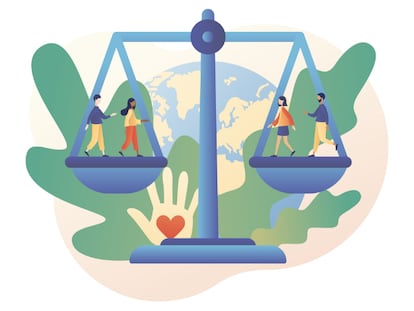Cable sobre el pago de los costes de limpieza de Palomares
En 2009 el encargado de negocios de la Embajada, consulta a Washington "¿Está el Gobierno de EEUU considerando pagar al menos parte de la limpieza y llevarse parte del suelo contaminado?"
| ID: | 204960 |
| Date: | 2009-04-30 14:13:00 |
| Origin: | 09MADRID432 |
| Source: | Embassy Madrid |
| Classification: | CONFIDENTIAL |
| Dunno: | 06MADRID2853 |
| Destination: | VZCZCXYZ0000 RR RUEHWEB DE RUEHMD #0432/01 1201413 ZNY CCCCC ZZH R 301413Z APR 09 FM AMEMBASSY MADRID TO RUEHC/SECSTATE WASHDC 0581 INFO RUEKJCS/SECDEF WASHDC RHEHNSC/NSC WASHDC RHMCSUU/DEPT OF ENERGY WASHINGTON DC |
C O N F I D E N T I A L MADRID 000432 SIPDIS STATE FOR EUR/WE, EUR/RPM, EUR/PRA, ISN, OES/PCI, OES/S/IHB NSC FOR TOBIN BRADLEY DOE FOR PWORTHINGTON, GPETERSON, BFOUNTOS DOD FOR OSD, OGC, J-4, J-5/POL-MIL FOR TPAWLOWSKI, WMACKIE, OSD/IE FOR CBOWLING, WNICHOLLS, OSD/ISA FOR MSADOWSKA E.O. 12958: DECL: 04/29/2019 TAGS: KGCN, KRAD, PARM, PGOV, PREL, SENV, SP SUBJECT: INTERAGENCY DECISION NEEDED ON PALOMARES RESPONSE TO GOS REF: 06 MADRID 2853 Classified By: Charge d'Affaires Arnold Chacon for Reasons 1(b) and (d) Summary and Action Request -------------------------- 1.(C) The GOS has for several months been seeking USG interlocutors to discuss final cleanup of radiation contamination at the Palomares site. In a March 16 diplomatic note, it asked for names of USG officials who would participate in a working group to consider future collaboration on site cleanup. Documents available to post give no indication that the USG has ever formally committed to fund a final cleanup. However, the contamination is the result of a 1966 accident between two U.S. military aircraft. For over four decades, DOE and its predecessor agency have helped fund GOS health and environmental monitoring, and DOE has helped fund a recently-completed GOS study of remaining contamination. GOS officials have indicated for some years that they expect USG assistance in funding cleanup costs, and they plan to seek disposal of additional contaminated soil in the U.S. 2.(C) Post believes that an interagency policy decision, likely involving the NSC, is needed on what the USG as a whole should do )- not just what any individual agency is legally obligated to do. Should the USG decide not to help fund a cleanup, we anticipate GOS surprise, significant negative publicity, and some negative impact on other areas of our bilateral relationship. Post recommends that the USG respond positively to the GOS diplomatic note and assure Spanish officials that the USG interagency has the matter under consideration and will respond appropriately. End Summary and Action Request. Background ---------- 3.(U) On January 17, 1966, a USAF B-52 carrying four plutonium-uranium 235 hydrogen bombs from Johnson AFB collided with a USAF KC-135 tanker aircraft based at the Spanish base of Moron during refueling above Spain,s southeastern coast. The collision killed seven of the two planes, 11 airmen and resulted in three bombs falling near the town of Palomares and one in the Mediterranean off the nearby coastal town of Villaricos. The non-nuclear detonation of two of the bombs resulted in the dispersal of plutonium contamination across 558 acres of the Palomares area. 4.(U) In the following months, DOD and the GOS conducted a cleanup of the affected areas. An estimated 1,400 tons of radioactive soil and vegetation were excavated and sent to the United States for disposal at the Savannah River site in South Carolina. After the cleanup, the GOS expropriated the affected areas and restricted their use. In the February 1966 Hall-Otero Agreement, the U.S. Atomic Energy Commission (AEC) agreed to provide technical assistance to the Spanish Junta de Energia Nuclear in investigating health and safety aspects of the accident. 5.(U) Since then, the USG has assisted GOS monitoring efforts, with DOE (the successor agency to the AEC) and its predecessor agency paying a portion of the costs of annual medical testing of all residents. A 1997 Implementing Agreement between DOE and the GOS scientific research agency CIEMAT outlined health and environmental monitoring cooperation. In Project Annex I to the Implementing Agreement, signed at the same time, DOE committed to pay 25% of CIEMAT,s annual costs for environmental and medical monitoring, up to $300,000, as well as $50,000 for a program review. Seeking to Finish the Program ----------------------------- 6.(SBU) As we understand it, lead agencies in both governments would like to end the program. DOE has spent over $3 million on Palomares in the last decade alone. CIEMAT would like a final cleanup, especially as measurements in 2001 led it to believe that remaining contamination might be more serious than previously believed. Cost may also be a factor in CIEMAT,s eyes; it has said it has about 100 employees working an average of half their time on Palomares issues. In addition, growth in the Palomares area over the last decade has led to pressure from the local government and developers who would like to construct housing on the site, which is near the coast. (Spain,s current housing slump and construction collapse may reduce this pressure in the short term, but CIEMAT remains very interested in a final cleanup.) 7.(SBU) Reftel discusses in detail the events that led to DOE and CIEMAT agreeing on a project to map contamination in the area, the results of which were to be used to recommend a final cleanup plan if needed. In a 2006 Project Annex II and a 2007 Project Annex III to the Implementing Agreement, DOE agreed to contribute $1.983 million to support this project (as well as continued environmental monitoring). In Annex III, DOE committed to help CIEMAT contact the Department of Defense six months before completion of the mapping project. After a July 2008 DOE visit in which preliminary project findings were discussed, DOE and CIEMAT agreed to begin discussions with their respective militaries. As we understand it, September 2008 conversations between individuals at DOE and USAF were inconclusive. In November, CIEMAT sought to contact DOD directly, but was discouraged from doing so. CIEMAT also has discussed with DOE its intent to seek International Atomic Energy Association (IAEA) review of the eventual final version of its cleanup plan, which it envisions will include USG input; an IAEA visit is scheduled for June. The cost of the final cleanup will depend upon what is determined to be necessary. Next Steps ) Interagency Decisions Needed ----------------------------------------- 8.(SBU) The study was completed in December, and the GOS would like to begin talks on a final cleanup plan. In a March 16 diplomatic note, it asked for names of USG officials who would participate in a working group to define responsibilities for cleanup. We understand that Washington agencies are considering how to respond to that note. We expect that the GOS will ask the USG to fund at least part of the cleanup costs and dispose of additional contaminated soil in the U.S. We see at least two issues to be addressed: 1) Which agency within the USG has the lead on the issue? 2) Is the USG willing to consider paying for at least some of the cleanup costs and disposing of additional contaminated soil in the U.S.? DOE officials have stated to GOS officials that any support for final cleanup is not a responsibility of DOE but of DOD. Post is not aware that DOD agrees that it has responsibility. Post believes that interagency consideration of these questions, likely with NSC involvement, will be necessary. No Legal Obligation for Cleanup? -------------------------------- 9.(SBU) Post is not aware of any documents indicating that the USG has committed to help fund a final cleanup. (We have seen one reference in a low-value 1969 USG-GOS contract to an assurance by General Wilson )- we assume Major General Delmar Wilson, who was in charge of initial accident response -- that the USG would defray &all expenses caused by the accident,8 but the contract contains no information on what this assurance covered.) The Hall-Otero Agreement refers to &a previously contaminated rural area that has been decontaminated in accordance with mutually agreed upon decontamination limits and procedures,8 and contains no reference to additional cleanup efforts. However, it is clear that, as a result of advances in scientific knowledge of what contamination levels are acceptable, further testing, and the preliminary results of the mapping project, additional cleanup is now considered necessary. The 2006 Project Annex II and 2007 Project Annex III state that nothing in them constitutes a commitment by either party to undertake or fund any cleanup activity. But an Expectation ------------------ 10.(SBU) CIEMAT has for several years expressed its expectation that the USG will support a final cleanup effort and, more recently, its desire to send additional contaminated soil to the U.S. for disposal. Reftel describes how events in 2005 and 2006 contributed to this expectation of USG support, which we believe has been reinforced by continued contacts over the past two years. Stories in the Spanish press also have contributed to this perception. What if We Say No? ------------------ 11.(C) If the USG decides not to engage in this effort, we anticipate a significant negative reaction, from the GOS and from the Spanish public and press. (We expect that the U.S. press, which occasionally writes followup stories, also would be interested.) We assume other areas of our bilateral relationship would be affected, but we do not have a sense for the extent of any reaction. The political and public focus will not be on whether the USG ever explicitly or implicitly made any commitments. Instead, it will be on USG unwillingness to help finish cleaning up contamination caused by U.S. weapons that fell from USAF airplanes. Post recommends that the USG respond positively to the GOS diplomatic note and assure Spanish officials that the USG interagency has the matter under consideration and will respond appropriately. CHACON |
Traducción automática. Puede que el texto traducido no sea fiel al original
Tu suscripción se está usando en otro dispositivo
¿Quieres añadir otro usuario a tu suscripción?
Si continúas leyendo en este dispositivo, no se podrá leer en el otro.
FlechaTu suscripción se está usando en otro dispositivo y solo puedes acceder a EL PAÍS desde un dispositivo a la vez.
Si quieres compartir tu cuenta, cambia tu suscripción a la modalidad Premium, así podrás añadir otro usuario. Cada uno accederá con su propia cuenta de email, lo que os permitirá personalizar vuestra experiencia en EL PAÍS.
¿Tienes una suscripción de empresa? Accede aquí para contratar más cuentas.
En el caso de no saber quién está usando tu cuenta, te recomendamos cambiar tu contraseña aquí.
Si decides continuar compartiendo tu cuenta, este mensaje se mostrará en tu dispositivo y en el de la otra persona que está usando tu cuenta de forma indefinida, afectando a tu experiencia de lectura. Puedes consultar aquí los términos y condiciones de la suscripción digital.
Archivado En
- cables wikileaks
- Accidente Palomares
- Descontaminación radiactiva
- Conflictos diplomáticos
- Relaciones bilaterales
- Cuevas del Almanzora
- Accidentes nucleares
- Bombas atómicas
- Wikileaks
- Armas nucleares
- Radiactividad
- Descontaminación
- Departamento Defensa EEUU
- Provincia Almería
- Contaminación radiactiva
- Filtración documentos
- Energía nuclear
- Accidentes
- Estados Unidos
- Relaciones internacionales
- Norteamérica
- Contaminación
- Andalucía
- Protección ambiental
- Sucesos




























































